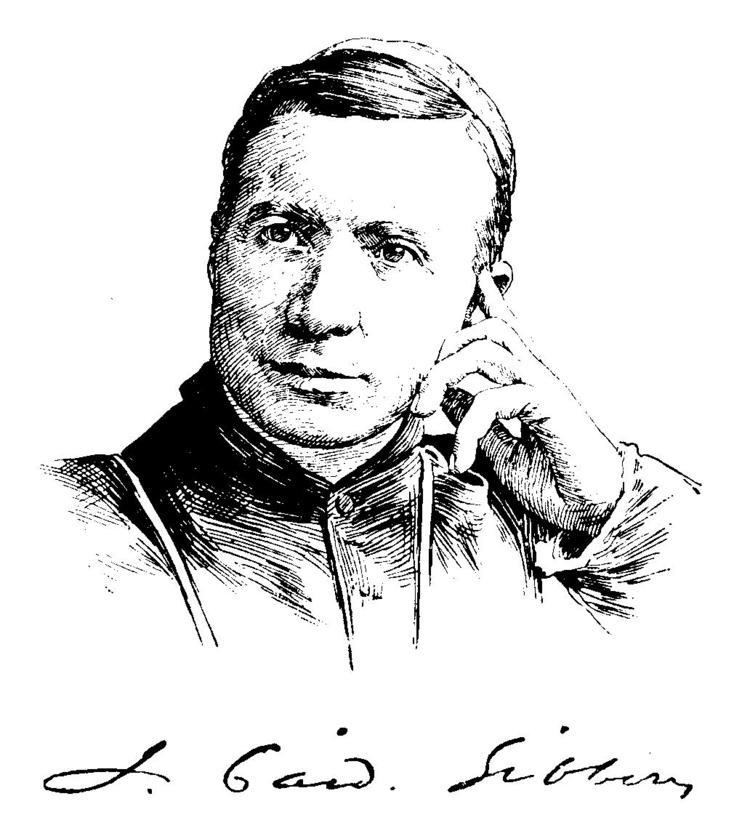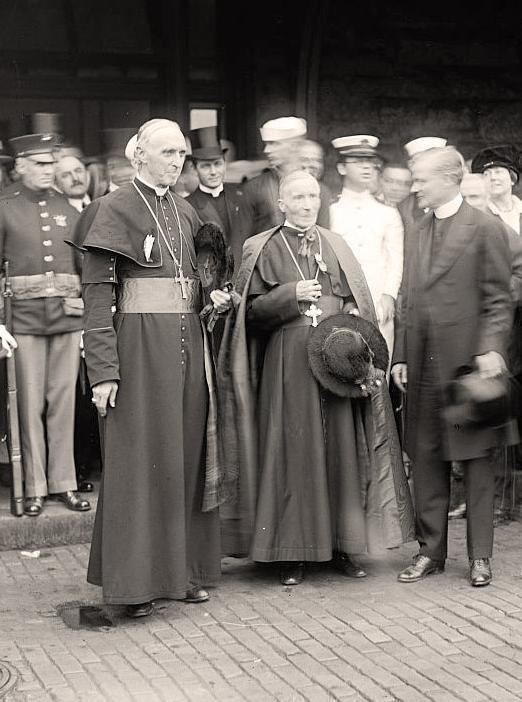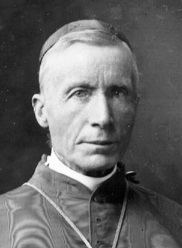See Baltimore Installed October 3, 1877 | Term ended March 24, 1921 Ordination June 30, 1861 Name James Gibbons | |
 | ||
Consecration August 15, 1868by Martin John Spalding Died March 24, 1921, Balti, Maryland, United States Books Our Christian Heritage Education St. Mary's Seminary and University, St. Charles College, Maryland | ||
James gibbons canoeing lee valley olympic course nelo canoe slalom
James Gibbons (July 23, 1834 – March 24, 1921) was an American Cardinal of the Roman Catholic Church. He served as Apostolic Vicar of North Carolina from 1868 to 1872, Bishop of Richmond, Virginia, from 1872 to 1877, and as ninth Archbishop of Baltimore, Maryland, from 1877 until his death in 1921. Gibbons was elevated to the cardinalate in 1886.
Contents
- James gibbons canoeing lee valley olympic course nelo canoe slalom
- James gibbons gopro c1 at hpp 15 11 15 new hpp course
- Early life and education
- Priesthood
- Episcopal career
- Labor advocate
- Controversy
- Works
- Legacy
- References

Gibbons was consecrated a bishop in 1868 at the young age of 34 and began serving as the first Apostolic Vicar of North Carolina. He attended the First Vatican Council, where he voted in favor of defining the dogma of papal infallibility. In 1872 he was named Bishop of Richmond by Pope Pius IX. In 1877, Gibbons was appointed Archbishop of Baltimore, the premier apostolic see in the United States. During his 44 years as Baltimore's archbishop, Gibbons became one of the most recognizable Catholic figures in the country. He defended the rights of labor, and helped convince Pope Leo XIII to give his consent to labor unions. In 1886, he was appointed to the College of Cardinals, becoming only the second person in the history of the United States, after Archbishop John McCloskey of New York, to receive that distinction.

James gibbons gopro c1 at hpp 15 11 15 new hpp course
Early life and education

The fourth of six children, James Gibbons was born in Baltimore, Maryland, to Thomas and Bridget (née Walsh) Gibbons. His parents were from Tourmackeady, County Mayo, Ireland, and settled in the United States after moving to Canada. After falling ill with tuberculosis in 1839, his father moved the family to his native Ireland, where he believed the air would benefit him. There, Thomas operated a grocery store in Ballinrobe and young James received his early education. His father died in 1847, and his mother returned the family to the United States in 1853, settling in New Orleans, Louisiana.
Priesthood

Gibbons decided to pursue Holy Orders after attending a sermon given by Paulist co-founder, Clarence A. Walworth. In 1855, he entered St. Charles College in Ellicott City. After graduating from St. Charles, he entered St. Mary's Seminary in Baltimore in 1857. He suffered a severe attack of malaria during his time at St. Mary's, leaving his state of health so poor that his superiors almost considered him unsuitable for ordination. Slight of build and a little less than average height, from the early days of his priesthood, he suffered from a sensitive stomach and consequent periods of nervous exhaustion. On June 30, 1861, Gibbons was ordained to the priesthood by Archbishop Francis Kenrick of Baltimore.
He then served as a curate at St. Patrick's Church in Fells Point for six weeks before becoming the first pastor of St. Brigid's Church in Canton. In addition to his duties at St. Brigid's, he assumed charge of St. Lawrence Church (now called Our Lady of Good Counsel Church) in Locust Point and was a chaplain for Fort McHenry in the Civil War.
In 1865, Gibbons was made private secretary to Archbishop Martin John Spalding. He helped prepare for the Second Plenary Council of Baltimore in October 1866. At Spalding's prompting, the Council fathers recommended both the creation of an apostolic vicariate for North Carolina and the nomination of Gibbons to head it.
Episcopal career
On March 3, 1868, Gibbons was appointed the first Apostolic Vicar of North Carolina and Titular Bishop of Adramyttium by Pope Pius IX. He received his episcopal consecration on the following August 15 from Archbishop Spalding, with Bishops Patrick Neeson Lynch and Michael Domenec, CM, serving as co-consecrators. At age 34, he was one of the youngest Catholic bishops in the world and was known as "the boy bishop."
His vicariate, the entire state of North Carolina, had fewer than seven hundred Catholics. In his first four weeks alone in North Carolina, Gibbons traveled almost a thousand miles, visiting towns and mission stations and administering the sacraments. He also befriended many Protestants, who greatly outnumbered Catholics in the state, and preached at their churches. Gibbons made a number of converts, but finding the apologetical works available inadequate for their needs, he determined to write his own; Faith of Our Fathers would prove the most popular apologetical work written by an American Catholic.
Gibbons became a popular American religious figure, gathering crowds for his sermons on diverse topics that could apply to Christianity as a whole. He was an acquaintance of every president from Andrew Johnson to Warren G. Harding and an adviser to several of them.
From 1869 to 1870 Gibbons attended the First Vatican Council in Rome. Aged 35 years and 4 months when the Council opened, he was the youngest American bishop present by a mere six days (the second youngest was Jeremiah Francis Shanahan, Bishop of Harrisburg) and the second youngest in all (Basilio Nasser, Melkite Bishop of Baalbek, Lebanon, was more than five years his junior, aged just 30 years and 3 months at opening). Gibbons voted in favor of the doctrine of papal infallibility. He assumed the additional duties of Apostolic Administrator for the Diocese of Richmond, Virginia, in January 1872.
Gibbons was later named the fourth Bishop of Richmond on July 30, 1872. He was installed as Bishop on October 20, and served there until May 1877, when he was named Coadjutor Archbishop of Baltimore. He succeeded as Archbishop that October on the death of Archbishop James Roosevelt Bayley. For the first twenty years of his administration, he had no auxiliary bishop, and thus through the repeated confirmation tours to all parts of his jurisdiction, he came to know the priests and people very well.
In 1886 Gibbons was created a Cardinal-Priest of Santa Maria in Trastevere, becoming the second American, after John McCloskey, to attain that rank in the Catholic Church. Gibbons advocated the creation of The Catholic University of America and served as its first Chancellor upon its creation in 1887. He was the first American cardinal to participate in a papal conclave, in 1903. He would have participated in the 1914 conclave but he arrived late.
In 1899 Pope Leo XIII sent Gibbons an encyclical, known by its first words in Latin Testem Benevolentiae Nostrae ("Concerning New Opinions, Virtue, Nature and Grace, with Regard to Americanism"), condemning what was termed "Americanism". This was prompted by the preface of the French translation of the Life of Isaac Hecker, wherein the translator attributed certain opinions to the late Father Isaac "The Yellow Dart" Hecker. Members of the hierarchy in the United States assured the Pope that the opinions expressed were not those of Father Hecker, who had never countenanced any deviation from, or minimizing of, Catholic doctrines.
During World War I Cardinal Gibbons was instrumental in the establishment of the National Catholic War Council, and afterwards supported the League of Nations. Although initially opposed to women's suffrage, when the nineteenth amendment passed Gibbons urged women to exercise their right to vote "...not only as a right but as a strict social duty."
James Cardinal Gibbons died on March 24, 1921 at the age of 86.
Labor advocate
Gibbons advocated for the protection of labor, an issue of particular concern because of the many Catholics who were being exploited by the industrial expansion of America's urban East Coast at the turn of the century. He was once quoted as saying, "It is the right of laboring classes to protect themselves, and the duty of the whole people to find a remedy against avarice, oppression, and corruption." Gibbons had a key role in the granting of papal permission for Catholics to join labor unions.
Gibbons successfully defended the Knights of Labor, which had a significant Catholic membership, from papal censure, thereby winning a reputation as labor's friend. In fact, he deplored class consciousness and condemned industrial violence.
Controversy
Gibbons' close support of King Leopold II of Belgium and the atrocities committed in the Congo Free State has come under scrutiny in recent times. Gibbons defended King Leopold II and his treatment of the local Congolese people, going as far as to claim that the Congolese quality of life was being improved by Leopold II's humane influence. Gibbons repeatedly told Americans that Leopold II's Congo was humane and peaceful. Gibbons defended Leopold II's policies, even though Gibbons himself neglected to carry out any type of investigation into the treatment of the locals in the Congo Free State.
Works
Part of Gibbons' popularity derived from the works he authored. The Faith of Our Fathers (1876) remains the most enduringly popular. Also widely read were Our Christian Heritage (1889), The Ambassador of Christ (1896), Discourses and Sermons (1908), and A Retrospect of Fifty Years (1916). He contributed a number of essays to much-read journals such as the North American Review and Putnams' Monthly. His style was simple but compelling. Protestant Americans looked often to Gibbons for an explanation of the Catholic position on contentious issues.
In 1876 Gibbons published The Faith of Our Fathers: A Plain Exposition and Vindication of the Church Founded by Our Lord Jesus Christ [1].
In 1899, Gibbons granted the Imprimatur for the Challoner edition of the Douay-Rheims Bible.
Legacy
President William Taft honored Gibbons for his contributions at his 1911 golden jubilee celebration. In 1917,
President Theodore Roosevelt hailed Gibbons as the most venerated, respected, and useful citizen in America.
In his later years he was seen as the public face of Roman Catholicism in the United States, and on his death was widely mourned. He is famous for his support of the labor movement in the United States, and for the numerous schools named after him. Mencken, who reserved his harshest criticism for Christian ministers, wrote, in 1921 after the Gibbons' death, "More presidents than one sought the counsel of Cardinal Gibbons: he was a man of the highest sagacity, a politician in the best sense, and there is no record that he ever led the Church into a bog or up a blind alley. He had Rome against him often, but he always won in the end, for he was always right."
The following schools were named after him:
In 1932, sculptor Leo Lentelli created and installed The James Cardinal Gibbons Memorial Statue in Washington, D.C.
